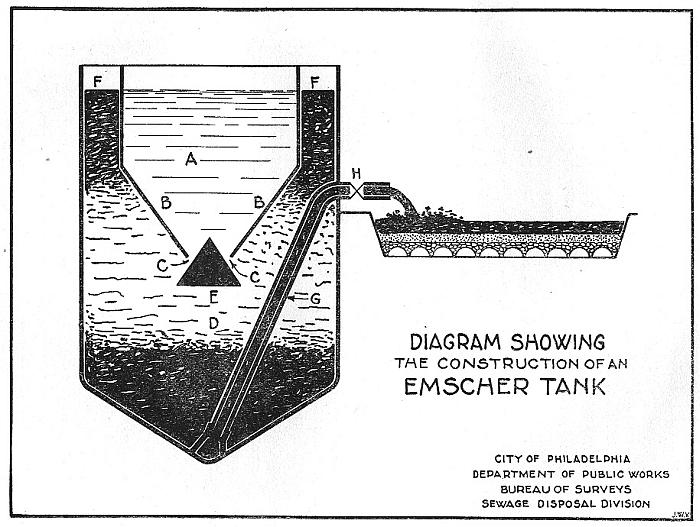The Imhoff tank is a compact treatment unit usually made of concrete and build in-ground. The Tank consists of a V-shaped settling chamber with a residence time of one to three hours. At the bottom of the V, settled solids drop into a lower anaerobic chamber that starts sludge stabilization. Scum and gas escape from the anaerobic chamber to gas vent channels running parallel to the V-channel (sedimentation chamber). The anaerobic section also has a V-shape for solids accumulation where pumps or screws can eventually remove digested solids for disposal.
As for performance, the Imhoff tank removes between 25 - 50% of inlet COD. With a relatively short residence time in the settling chamber, odors associated with anoxic/anaerobic wastewater are prevented. The anaerobic gases including methane are vented in the side channels with the scum layer helping control organic acid and sulfide odors. As with all anaerobic pretreatment, pathogen removal is low. Normal operations include checking scum & anaerobic chamber sludge levels. Digested sludge should be removed with solids being treated in drying beds or composting - to ensure pathogen removal.
Water passing through the settling chamber, still contains substantial COD/BOD, ammonia, phosphorus, and enteric organisms. Further treatment is required. In traditional Imhoff systems, the discharged water enters facultative lagoons, rock-reed filters, trickling filters, or other low-cost aerobic/oxidation system.
Imhoff tanks with low construction and operational costs are suitable for communities with flows up to 950 cubic meters or 250,000 gallons per day.
Benefits of Imhoff Tanks
- Solid-liquid separation and sludge stabilization in one small foot-print unit
- Wastewater does not go septic (anoxic) in the sedimentation chamber
- Resistant against organic shock loads
- No complex equipment, well known designs with low construction costs
- Well suited for flows less than 250,000 gallons per day
- Simple operation and maintenance
- In areas with high groundwater levels, the depth requirements for Imhoff tanks may be a problem
- Low removal of pathogenic organisms
- Sludge and scum must be checked and removed
- Effluent water and sludge require further treatment (Imhoff is not a stand alone treatment system)
- More complex than septic tank (but also more efficient)


 RSS Feed
RSS Feed